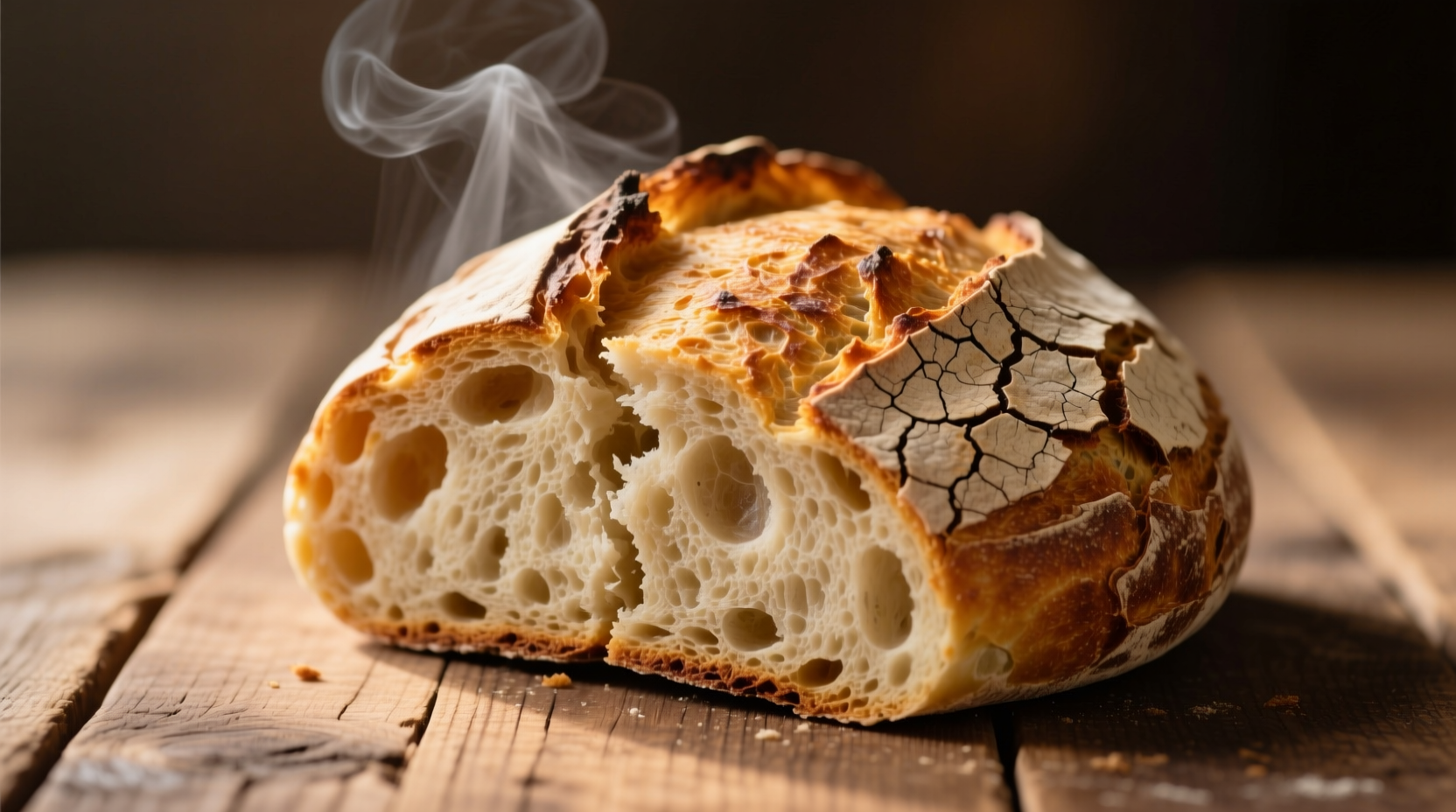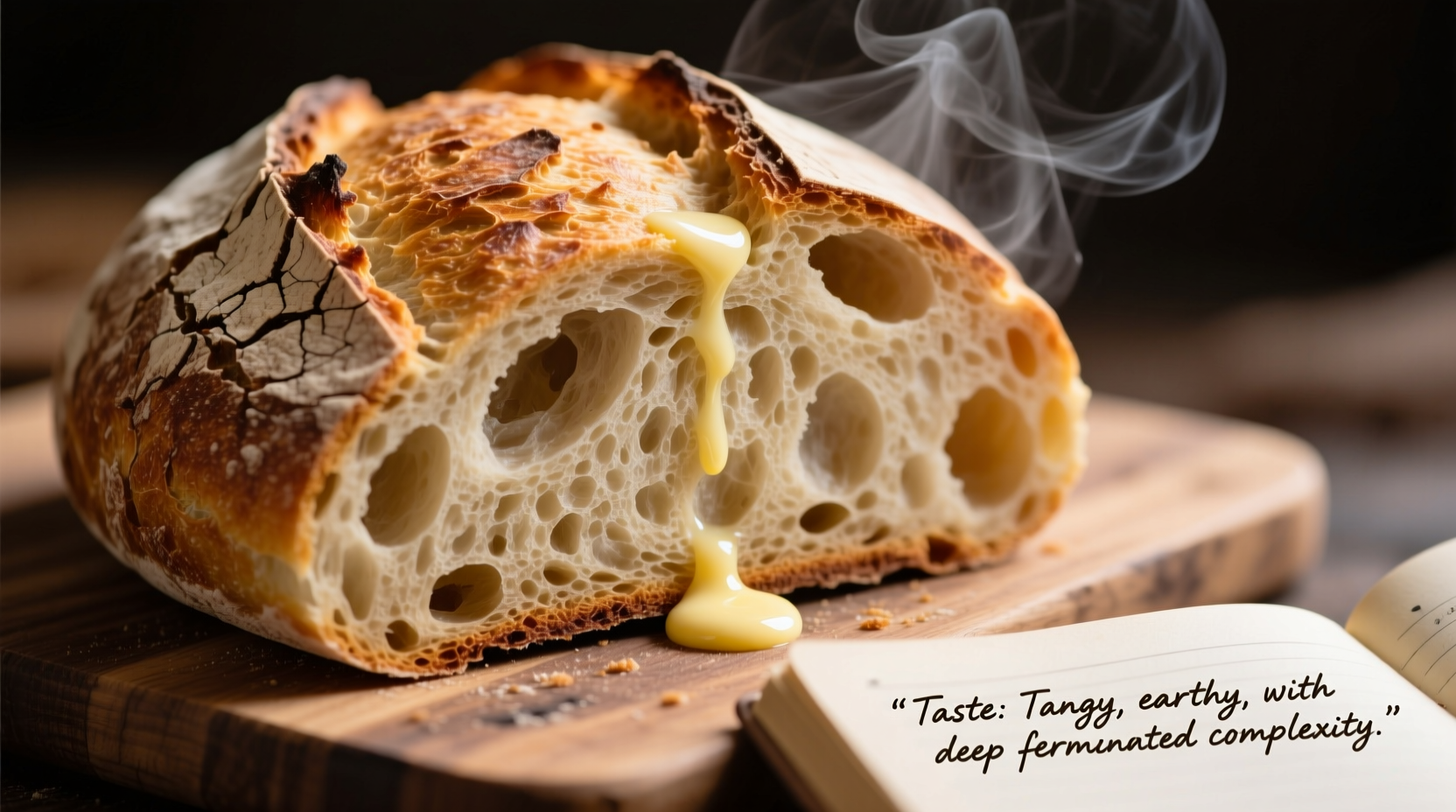Have you ever wondered why sourdough bread tastes different from your standard supermarket loaf? That distinctive tang isn't just in your imagination—it's the result of a centuries-old fermentation process that transforms simple ingredients into something extraordinary. Understanding sourdough's flavor profile helps you appreciate artisanal breads and make better choices for your palate.
The Science Behind Sourdough's Signature Taste
Sourdough's unique flavor comes from its natural fermentation process involving wild yeast and lactic acid bacteria. Unlike commercial yeast breads that use Saccharomyces cerevisiae, sourdough relies on a symbiotic culture of bacteria (primarily Lactobacillus species) and wild yeast. During fermentation, these microorganisms produce lactic acid and acetic acid—the key compounds responsible for sourdough's characteristic taste.
According to research published in the Journal of Agricultural and Food Chemistry, sourdough contains over 200 volatile compounds that contribute to its complex flavor profile. The balance between lactic acid (which creates a mild, yogurt-like tang) and acetic acid (which produces a sharper vinegar note) determines whether a particular sourdough tastes more pleasantly sour or intensely acidic.
| Acid Type | Flavor Contribution | Production Conditions |
|---|---|---|
| Lactic Acid | Mild, creamy tang (like yogurt) | Warmer temperatures (80-85°F), shorter fermentation |
| Acetic Acid | Sharper, vinegar-like sourness | Cooler temperatures (70-75°F), longer fermentation |
How Sourdough Flavor Develops: A Natural Timeline
The distinctive taste of sourdough doesn't happen overnight—it evolves through specific stages of fermentation. Understanding this timeline helps explain why artisan bakers carefully control fermentation conditions:
- 0-4 hours: Initial fermentation where wild yeast begins converting sugars to alcohol and CO2
- 4-8 hours: Lactic acid bacteria become dominant, producing the first subtle tangy notes
- 8-12 hours: Flavor complexity increases as secondary metabolites develop
- 12-24 hours: Optimal flavor development with balanced acidity and complex flavor compounds
- 24+ hours: Increased sourness as acetic acid production rises (can become overpowering)
This natural progression explains why most professional bakers use 12-18 hour fermentation periods for balanced flavor. Rushing the process creates bland bread, while over-fermenting produces excessively sour results that many palates find challenging.

Factors That Shape Sourdough Flavor
Several variables influence how your sourdough tastes, making each loaf unique:
Flour Selection Matters
Whole grain flours contribute more complex flavors than refined white flour due to their higher mineral content and natural enzymes. Rye flour creates particularly distinctive sourdough with earthy, malty notes. The King Arthur Baking Company notes that different wheat varieties contain varying levels of sugars that feed the fermentation process, directly impacting final flavor.
Water Quality's Surprising Impact
The mineral content of your water affects both fermentation and flavor. Hard water (high in calcium and magnesium) strengthens gluten and can enhance flavor development, while soft water may produce milder-tasting bread. Chlorinated municipal water can inhibit wild yeast activity—many artisan bakers use filtered water for consistent results.
Temperature Control is Crucial
Fermentation temperature dramatically affects flavor development. Cooler temperatures (70-75°F) favor acetic acid production for sharper sourness, while warmer temperatures (80-85°F) promote lactic acid for milder tang. Professional bakers often use temperature-controlled proofing boxes to achieve precise flavor profiles.
Sourdough vs. Other Breads: A Flavor Comparison
Understanding how sourdough differs from other breads helps explain its unique appeal:
| Bread Type | Flavor Profile | Texture | Shelf Life |
|---|---|---|---|
| Sourdough | Tangy, complex, nutty notes | Chewy interior, crisp crust | 4-5 days (natural preservatives) |
| Commercial Yeast Bread | Mild, slightly sweet | Soft, uniform crumb | 2-3 days (often contains preservatives) |
| Quick Bread | Sweet, buttery | Dense, cake-like | 2-3 days |
When Sourdough Might Not Taste Right
Several factors can prevent sourdough from developing its characteristic flavor:
- Unhealthy starter: A weak or contaminated starter won't produce proper fermentation
- Insufficient fermentation time: Rushed processes create bland bread lacking complexity
- Incorrect hydration: Too much water dilutes flavor compounds; too little restricts fermentation
- Poor baking technique: Underbaked sourdough lacks developed flavors; overbaked becomes overly bitter
According to the Bread Bakers Guild of America, properly made sourdough should never taste unpleasantly acidic or vinegary—these indicate fermentation imbalances. The ideal sourdough offers a pleasant balance where the tang enhances rather than overwhelms other flavors.
Practical Tips for Enjoying Sourdough Flavor
Maximize your sourdough experience with these professional techniques:
Proper Storage Preserves Flavor
Store sourdough in a linen bag or paper bag at room temperature—never in plastic, which traps moisture and degrades the crust. Avoid refrigeration, which accelerates staling. For longer storage, freeze slices and toast directly from frozen.
Optimal Serving Temperature
Sourdough tastes best at room temperature. Cold bread masks flavor compounds—allow refrigerated or frozen sourdough to come to room temperature before eating. The ideal serving temperature is 68-72°F, where flavor compounds are most volatile and perceptible.
Creative Pairing Suggestions
Enhance sourdough's natural flavors with complementary pairings:
- Mild sourdough: Pair with creamy cheeses like brie or camembert
- Medium sourness: Complement with aged cheddar or sharp gouda
- Highly sour varieties: Balance with honey, fruit preserves, or roasted garlic
Developing Your Sourdough Palate
Learning to appreciate sourdough's complexity takes practice. Food scientists at UC Davis recommend a structured tasting approach:
- Examine the crust color (darker indicates more caramelization)
- Smell the bread before tasting (sourdough should have pleasant, complex aromas)
- Chew slowly, noting flavor progression from initial tang to lingering nuttiness
- Pay attention to aftertaste (good sourdough leaves a pleasant, slightly sweet finish)
Most people find their appreciation for sourdough grows with repeated exposure. A 2022 consumer study by the American Institute of Baking showed that 78% of participants who initially disliked sourdough developed a preference after tasting five different artisan varieties.
Frequently Asked Questions
Why does my sourdough taste different from bakery sourdough?
Home sourdough often tastes different due to variations in starter maturity, fermentation time, temperature control, and baking technique. Professional bakers use precise temperature and humidity controls that are difficult to replicate at home. Adjusting your fermentation time and temperature can help you achieve more consistent results.
Is sourdough supposed to taste sour?
Yes, but the sourness should be balanced and pleasant, not overpowering. Well-made sourdough offers a complex flavor profile where the tang enhances rather than dominates. The degree of sourness depends on fermentation time, temperature, and starter composition. Many commercial "sourdough" products contain minimal actual sourdough and rely on added acids for artificial tang.
Does sourdough taste better than regular bread?
"Better" is subjective, but sourdough generally offers more complex flavors due to its natural fermentation process. The lactic acid production creates nuanced flavor compounds absent in commercial yeast breads. Many people prefer sourdough's distinctive taste and find it more satisfying, though personal preference plays a significant role in bread enjoyment.
Why does some sourdough taste bitter?
Bitterness in sourdough usually indicates over-fermentation or excessive baking. When sourdough ferments too long, it can develop unpleasant acidic compounds. Overbaking causes excessive caramelization that turns sweet compounds bitter. Using too much whole grain flour, particularly rye, can also contribute bitter notes if not properly balanced with other flours.











 浙公网安备
33010002000092号
浙公网安备
33010002000092号 浙B2-20120091-4
浙B2-20120091-4